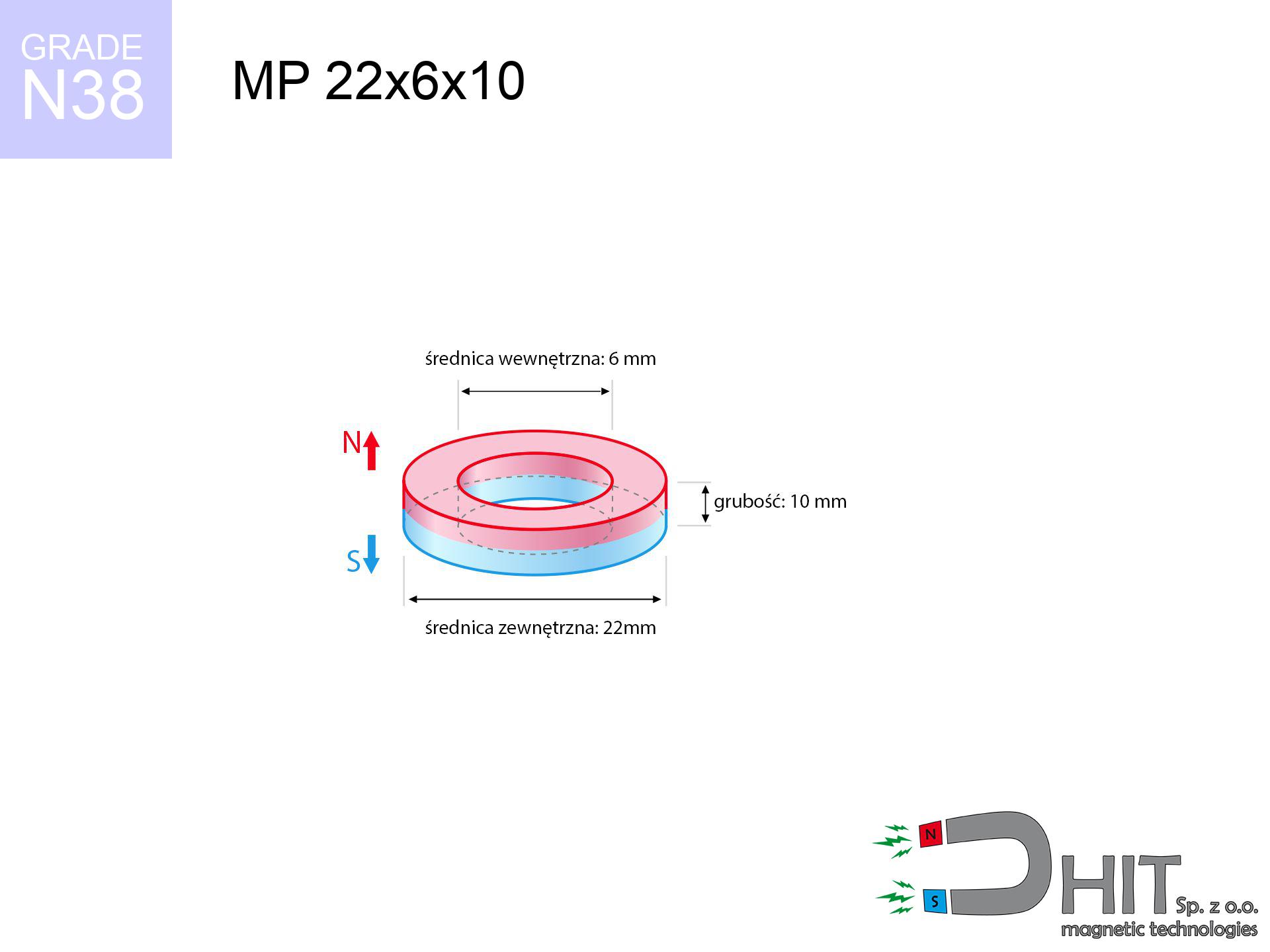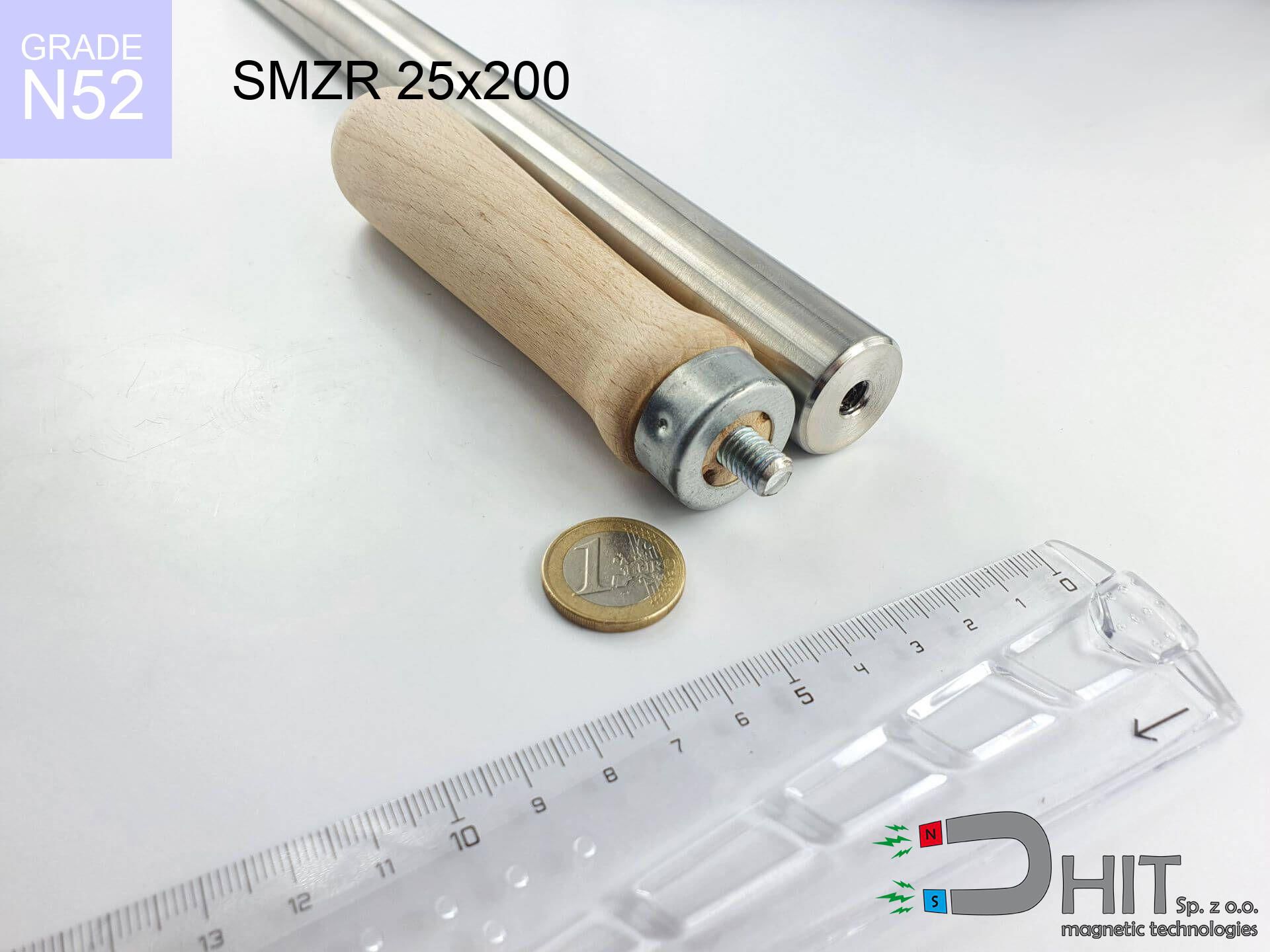LM TLN - 20 R / N38 - magnetic leviton
magnetic leviton
Catalog no 290492
GTIN/EAN: 5906301814504
Weight
1000 g
Pick up the phone and ask
+48 888 99 98 98
if you prefer drop us a message via
contact form
the contact form page.
Strength and appearance of a neodymium magnet can be reviewed on our
force calculator.
Order by 14:00 and we’ll ship today!
Technical data of the product - LM TLN - 20 R / N38 - magnetic leviton
Specification / characteristics - LM TLN - 20 R / N38 - magnetic leviton
| properties | values |
|---|---|
| Cat. no. | 290492 |
| GTIN/EAN | 5906301814504 |
| Production/Distribution | Dhit sp. z o.o. |
| Country of origin | Poland / China / Germany |
| Customs code | 85059029 |
| Weight | 1000 g |
| Manufacturing Tolerance | ±1 mm |
Magnetic properties of material N38
| properties | values | units |
|---|---|---|
| remenance Br [min. - max.] ? | 12.2-12.6 | kGs |
| remenance Br [min. - max.] ? | 1220-1260 | mT |
| coercivity bHc ? | 10.8-11.5 | kOe |
| coercivity bHc ? | 860-915 | kA/m |
| actual internal force iHc | ≥ 12 | kOe |
| actual internal force iHc | ≥ 955 | kA/m |
| energy density [min. - max.] ? | 36-38 | BH max MGOe |
| energy density [min. - max.] ? | 287-303 | BH max KJ/m |
| max. temperature ? | ≤ 80 | °C |
Physical properties of sintered neodymium magnets Nd2Fe14B at 20°C
| properties | values | units |
|---|---|---|
| Vickers hardness | ≥550 | Hv |
| Density | ≥7.4 | g/cm3 |
| Curie Temperature TC | 312 - 380 | °C |
| Curie Temperature TF | 593 - 716 | °F |
| Specific resistance | 150 | μΩ⋅cm |
| Bending strength | 250 | MPa |
| Compressive strength | 1000~1100 | MPa |
| Thermal expansion parallel (∥) to orientation (M) | (3-4) x 10-6 | °C-1 |
| Thermal expansion perpendicular (⊥) to orientation (M) | -(1-3) x 10-6 | °C-1 |
| Young's modulus | 1.7 x 104 | kg/mm² |
Chemical composition
| iron (Fe) | 64% – 68% |
| neodymium (Nd) | 29% – 32% |
| boron (B) | 1.1% – 1.2% |
| dysprosium (Dy) | 0.5% – 2.0% |
| coating (Ni-Cu-Ni) | < 0.05% |
Ecology and recycling (GPSR)
| recyclability (EoL) | 100% |
| recycled raw materials | ~10% (pre-cons) |
| carbon footprint | low / zredukowany |
| waste code (EWC) | 16 02 16 |
Other products
Advantages as well as disadvantages of neodymium magnets.
Pros
- They do not lose magnetism, even after around ten years – the decrease in lifting capacity is only ~1% (based on measurements),
- They have excellent resistance to magnetic field loss when exposed to external fields,
- A magnet with a shiny silver surface is more attractive,
- The surface of neodymium magnets generates a strong magnetic field – this is one of their assets,
- Made from properly selected components, these magnets show impressive resistance to high heat, enabling them to function (depending on their form) at temperatures up to 230°C and above...
- Due to the option of accurate shaping and customization to custom solutions, neodymium magnets can be produced in a variety of shapes and sizes, which amplifies use scope,
- Key role in modern technologies – they find application in data components, electric drive systems, advanced medical instruments, and complex engineering applications.
- Relatively small size with high pulling force – neodymium magnets offer strong magnetic field in tiny dimensions, which makes them useful in small systems
Limitations
- To avoid cracks under impact, we recommend using special steel housings. Such a solution protects the magnet and simultaneously increases its durability.
- NdFeB magnets demagnetize when exposed to high temperatures. After reaching 80°C, many of them experience permanent weakening of power (a factor is the shape and dimensions of the magnet). We offer magnets specially adapted to work at temperatures up to 230°C marked [AH], which are very resistant to heat
- They rust in a humid environment. For use outdoors we advise using waterproof magnets e.g. in rubber, plastic
- Due to limitations in producing nuts and complex forms in magnets, we recommend using cover - magnetic mechanism.
- Potential hazard to health – tiny shards of magnets are risky, if swallowed, which gains importance in the context of child health protection. Additionally, small elements of these devices are able to be problematic in diagnostics medical after entering the body.
- Higher cost of purchase is one of the disadvantages compared to ceramic magnets, especially in budget applications
Holding force characteristics
Maximum lifting force for a neodymium magnet – what it depends on?
- with the use of a yoke made of special test steel, ensuring full magnetic saturation
- with a thickness minimum 10 mm
- characterized by lack of roughness
- without the slightest insulating layer between the magnet and steel
- under vertical application of breakaway force (90-degree angle)
- at room temperature
Key elements affecting lifting force
- Distance – existence of any layer (paint, tape, gap) acts as an insulator, which reduces capacity rapidly (even by 50% at 0.5 mm).
- Angle of force application – maximum parameter is reached only during perpendicular pulling. The force required to slide of the magnet along the surface is typically several times lower (approx. 1/5 of the lifting capacity).
- Metal thickness – the thinner the sheet, the weaker the hold. Part of the magnetic field penetrates through instead of converting into lifting capacity.
- Steel type – low-carbon steel gives the best results. Alloy steels reduce magnetic permeability and holding force.
- Smoothness – ideal contact is possible only on smooth steel. Any scratches and bumps create air cushions, weakening the magnet.
- Operating temperature – neodymium magnets have a sensitivity to temperature. At higher temperatures they lose power, and at low temperatures gain strength (up to a certain limit).
Holding force was measured on a smooth steel plate of 20 mm thickness, when the force acted perpendicularly, in contrast under attempts to slide the magnet the holding force is lower. Moreover, even a small distance between the magnet and the plate decreases the holding force.
H&S for magnets
Demagnetization risk
Watch the temperature. Exposing the magnet to high heat will ruin its magnetic structure and strength.
ICD Warning
People with a ICD should keep an large gap from magnets. The magnetism can stop the functioning of the life-saving device.
Adults only
Absolutely store magnets out of reach of children. Choking hazard is significant, and the consequences of magnets connecting inside the body are fatal.
Fragile material
Despite the nickel coating, neodymium is brittle and not impact-resistant. Avoid impacts, as the magnet may shatter into sharp, dangerous pieces.
Hand protection
Pinching hazard: The attraction force is so great that it can cause hematomas, pinching, and broken bones. Use thick gloves.
Respect the power
Before use, check safety instructions. Uncontrolled attraction can destroy the magnet or hurt your hand. Be predictive.
Nickel allergy
Allergy Notice: The nickel-copper-nickel coating contains nickel. If an allergic reaction happens, immediately stop handling magnets and use protective gear.
Combustion hazard
Combustion risk: Neodymium dust is explosive. Do not process magnets in home conditions as this may cause fire.
Data carriers
Data protection: Strong magnets can ruin data carriers and delicate electronics (pacemakers, hearing aids, timepieces).
GPS Danger
An intense magnetic field negatively affects the functioning of magnetometers in phones and navigation systems. Maintain magnets close to a device to avoid breaking the sensors.



![BM 650x180x70 [4x M8] - magnetic beam BM 650x180x70 [4x M8] - magnetic beam](https://cdn3.dhit.pl/graphics/products/bm-650x180x70-4x-m8-laj.jpg)
![SM 32x250 [2xM8] / N42 - magnetic separator SM 32x250 [2xM8] / N42 - magnetic separator](https://cdn3.dhit.pl/graphics/products/sm-32x250-2xm8-kex.jpg)



